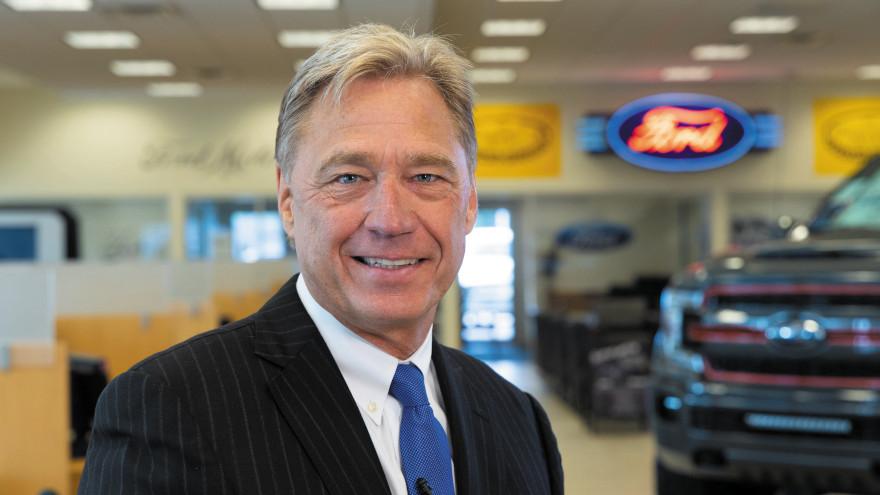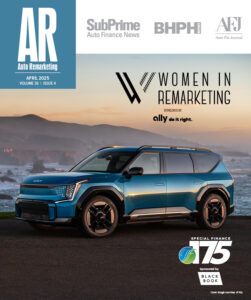Flexibility is key for car dealers amid digital, tech changes in automotive

File photo of 2020 NADA chair Rhett Ricart, who spoke to the Automotive Press Association late last year. Photos courtesy of NADA.
Be prepared to be flexible.
That’s something in which many dealers are well-versed, and it was part of a message that 2020 National Automobile Dealers Association chairman Rhett Ricart emphasized during a virtual presentation to the Automotive Press Association back in November.
Auto dealers, who were already adjusting their operations and business practices amid an increasingly digital world, largely had to shift to fully digital sales during the outset of the COVID-19 pandemic, which has “accelerated customer adoption” of completely online car sales, Ricart said.
But he urged dealers to remain flexible and adjust to the needs of customers accordingly, some of whom may want to take care of some pieces of the transaction in person.
A summary of Ricart’s comments was provided by NADA in a press release.
“While we know the pandemic accelerated customer adoption of a fully digital sale, we also know that many, many customers will still want to do what they’ve done before, which is start the sales and financing process online, but come to the store at some point to complete the transaction,” Ricart said in the virtual speech, according to the release provided by NADA. “This doesn’t mean that these digital services will work for every customer in every instance.
“But it does mean that dealers should have the capability to make these services work for every single customer that wants to capitalize on them.”
The association said his address reflected learnings from a NADA dealer survey in July.
During the speech, Ricart emphasized the importance of transparency and willingness to adjust to working with consumers on digital retail.
“Most dealers believe that as the digital retail experience evolves, OEMs need to rethink their costly and ever-changing image programs to better align with the evolving consumer — a customer that places a far, far higher premium on flexibility and convenience than they do on rigidity and opulence,” Ricart said. “These mausoleum mandates do nothing to help dealers or the customers they serve.”
He also addressed an item that dealers need from automakers: simpler incentives, which dealers contend will improve the digital sales process.
“64% of franchised dealers said simplifying incentives has to be the top thing their automaker partners embrace in order to effectively embrace and harness the change that is happening in customer preferences all across America,” Ricart said. “To be successful and credible with digital retailing, the sales process must be transparent to the consumer. For the benefit of the consumer, OEMs need to make dealership incentives as simple and non-complex as possible.”
Resilience, flexibility and adaptability are often words that are expressed about dealers from industry leadership, association or otherwise. And rightfully so.
On a high level, auto dealers were already working to adjust their sales processes, operations and offerings pre-COVID, as not only increased digitization of transactions took hold, but vehicle ownership and usage were impacted by trend lines commonly referred to as “ACES” or “CASE” — referring to autonomous vehicles, connectivity, electrification and shared mobility.
Then, 2020 threw in the wrench of COVID-19, necessitating dealers adapt even further.
During his speech, Ricart praised dealers for their ability to adjust with aplomb.
“In a pandemic, when dealers have had to change so many elements of the store on the fly, with inventory levels at historic lows, with new and used car prices at record highs, our customers are reporting that they’ve never been happier with the sales process that they’re getting at their franchised dealerships,” Ricart said.
“By the millions,” he said. “That is a testament to the work the dealers have done to meet their customers where they are comfortable – physically and logistically. And with flexibility and transparency.”
A similar theme was echoed in an Auto Remarketing commentary contributed by Greta Crowley, who is vice president of marketing for Autotrader and Kelley Blue Book at Cox Automotive. In her column, Crowley talks about the shift in technology use at dealerships and the various ways dealers are using that technology to adapt to changing consumer demands.
“Just like in every other industry, digital disruption will separate the innovators from the laggards. Opportunistic dealers will thrive by digitizing processes and innovating on top with what customers prefer: convenience and transparency,” she writes.
“Those that are slow to adopt new technology might be able to hang on for a while, but this new consumer behavior is not going anywhere — they will eventually have to adapt or move on. For those that do not want to be left behind, there are a few different niches to pay attention to as we move into a progressed auto industry,” said Crowley, who discusses those niches further in this column.
In related news, Roadster and NADA dove into digital and remote selling through two waves of a dealer study in 2020.
As part of that, it became apparent this spring, through the first wave of their Dealer Impact Study, that when dealerships were largely forced to go digital and sell remotely at the outset of the COVID-pandemic, they often became more efficient.
Part 1 of the study found that a dealership salesperson was averaging 13 sales per month this spring; this after the average for some 35 years had remained around 10 sales per month, according to data from NADA shared by Roadster.
That’s quite a jump — but is it sustainable?
That’s part of what Roadster chief marketing officer Michelle Denogean said Part 2 of the study was looking to uncover.
“And what we found, in fact, was that with a little bit more time using the technology, the units per salesperson grew,” Denogean said in an October interview early last month.
Part 2 of the study, released in mid-October, included 320 dealers and a survey of 1,000 consumers. A recap of its findings can be found here.

 View The Latest Edition
View The Latest Edition

